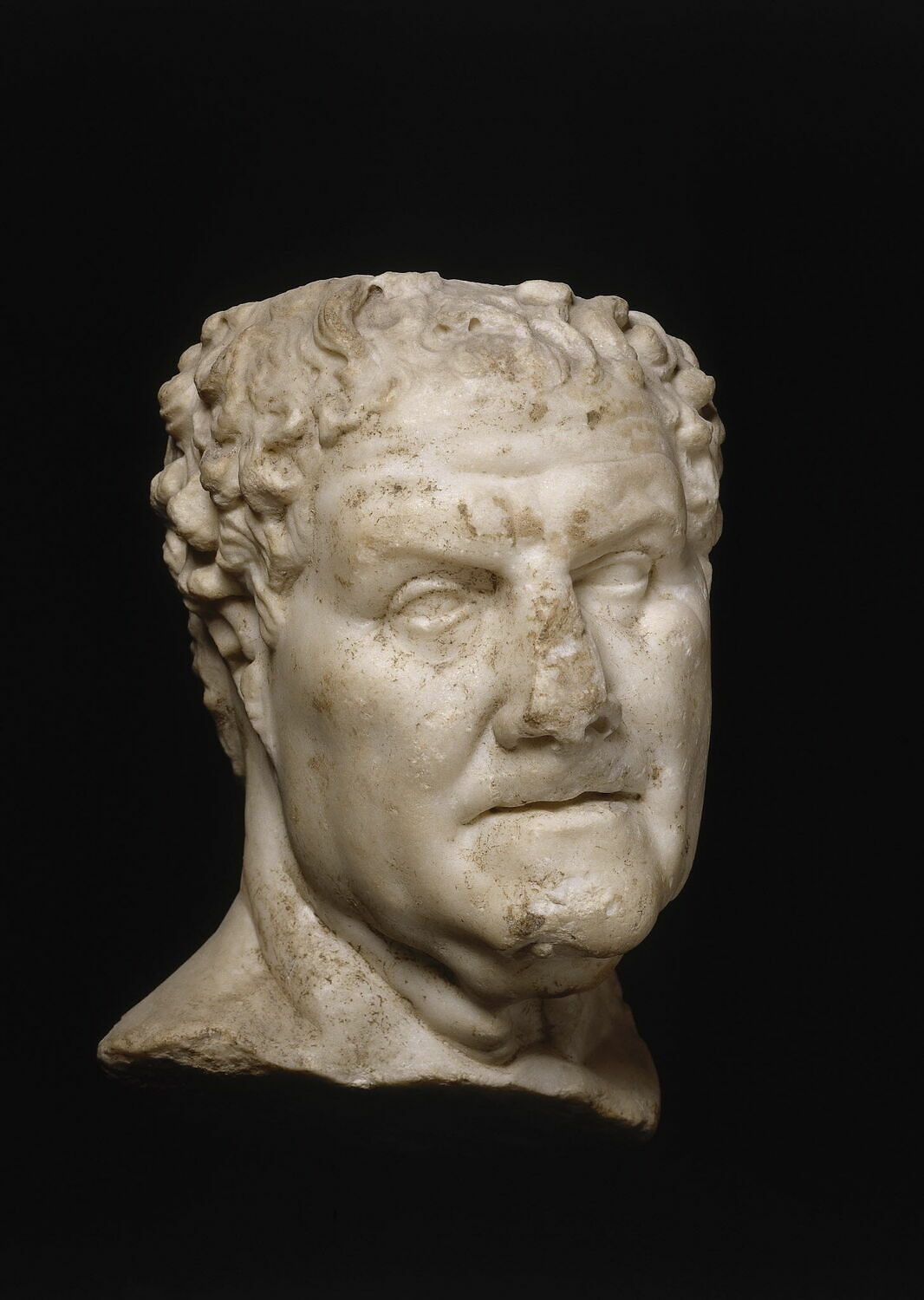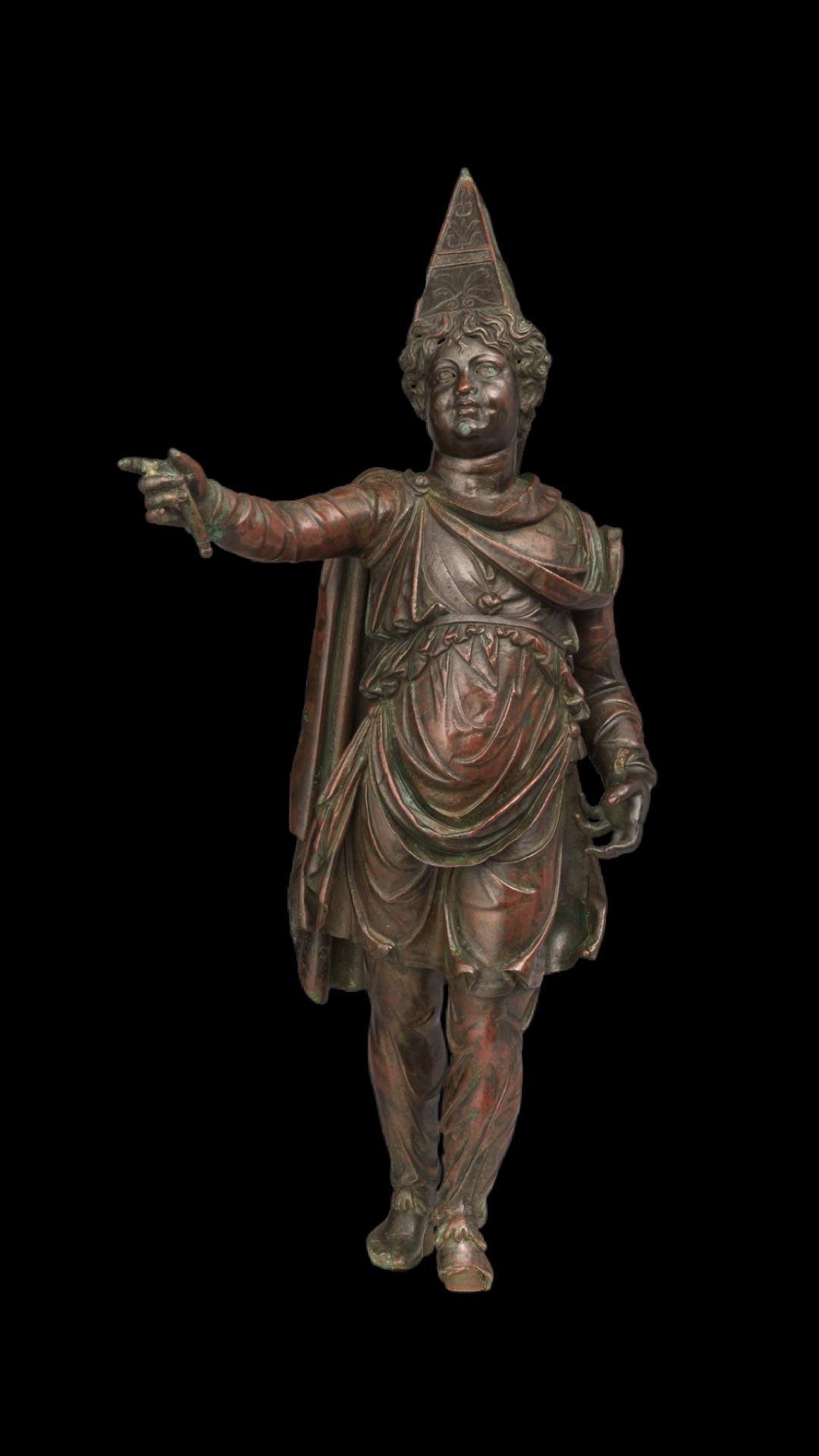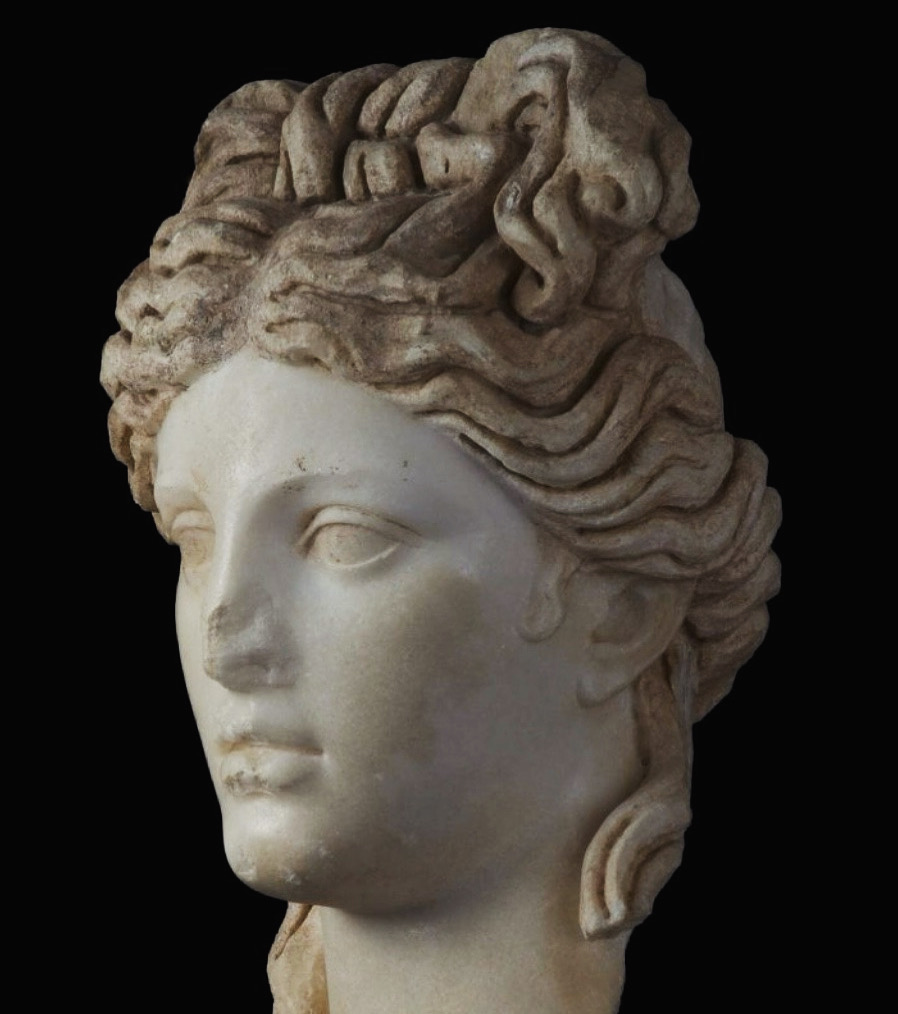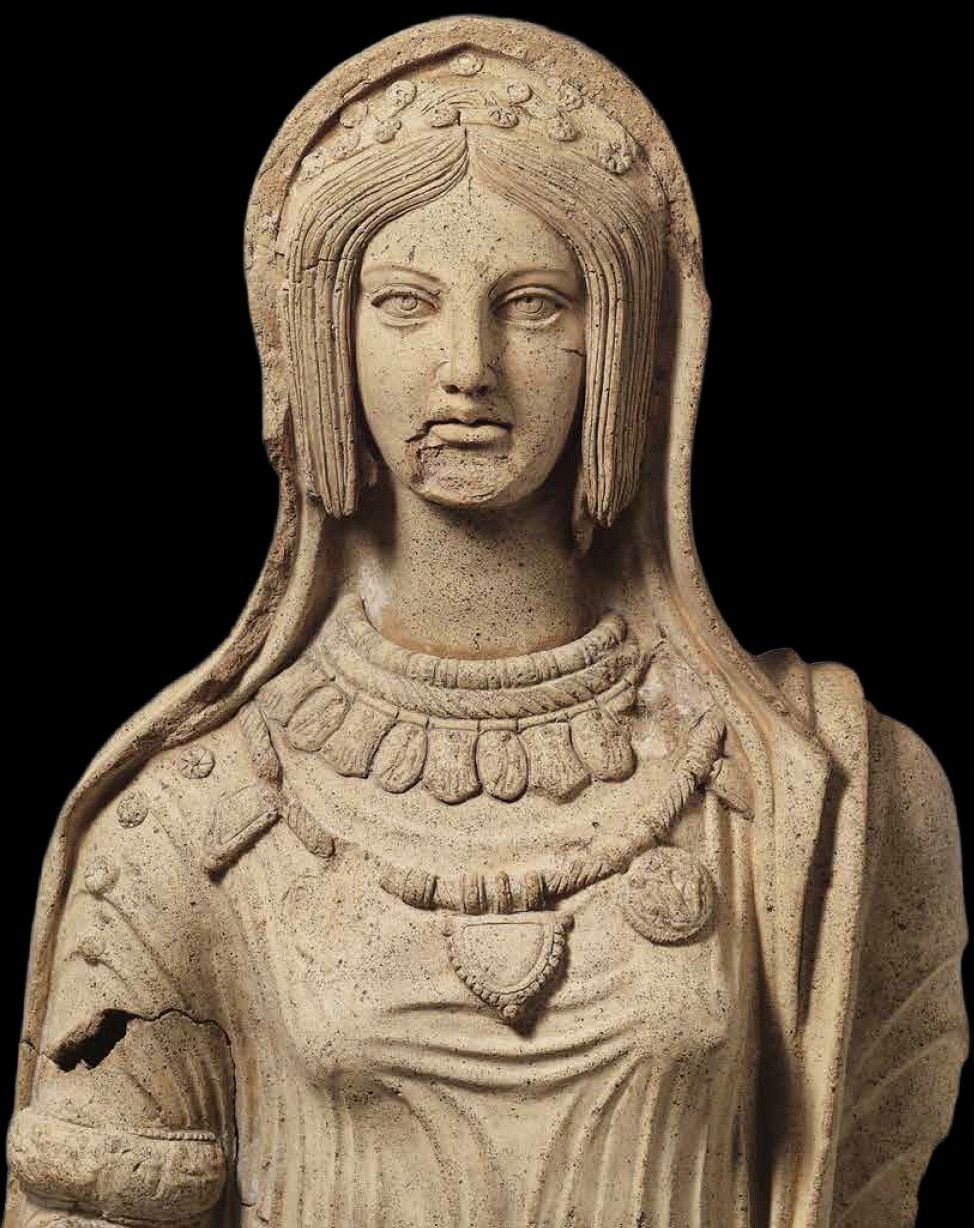A lot is written about the interplay between Hellenistic ruler portraits (with their over the top heroic dynamism and supple youth) and those of hollow-cheeked Roman aristocrats during the second and first centuries B.C. It’s a fun thing to think about…how to select a mode of self-representation and how to make it resonate within a relatively rigid society’s own revered traditions?
Textbooks usually trot out Rome’s Tivoli General to illustrate the uneasy marriage of the two modes, with his weary, somewhat wizened face on a taut muscular body.
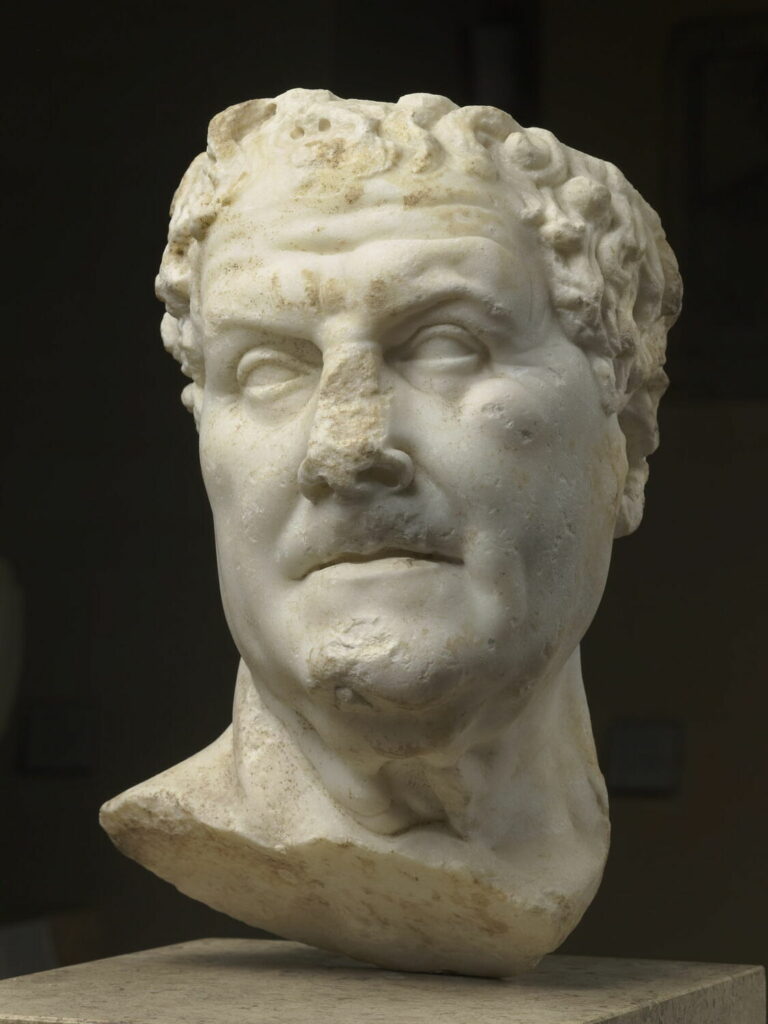
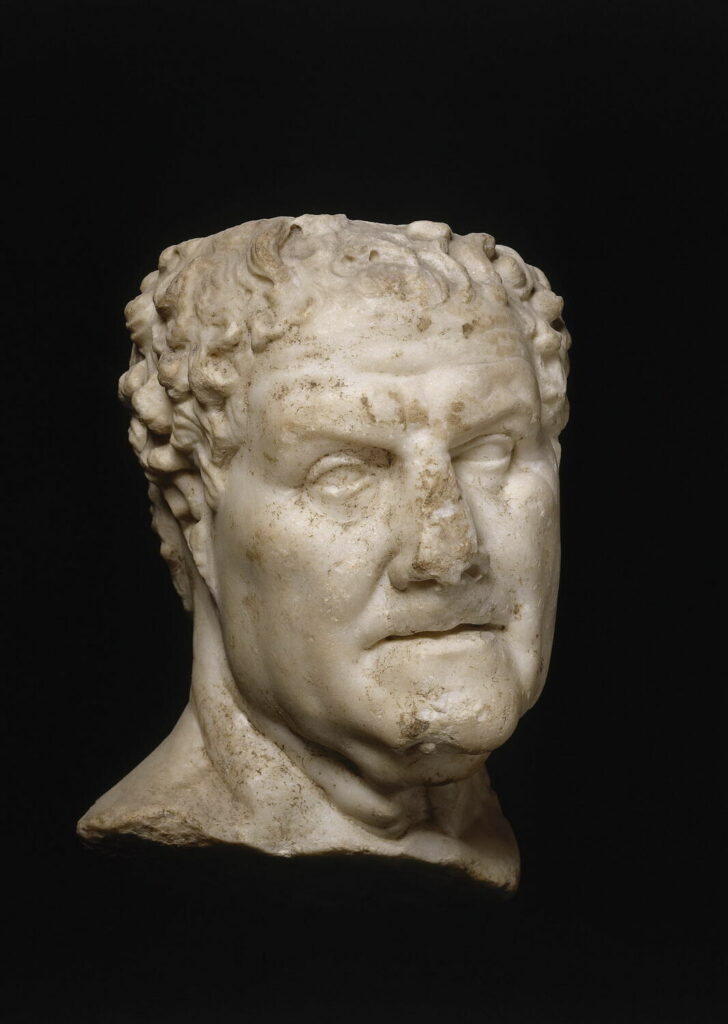
I wonder if this sleeper at the Louvre (relatively obscure as he’s not usually on view and hard to find unless you’re trolling through books on portraiture) might not be an even better poster-boy for this fundamentally experimental period.
I did a double take when I came first saw him – the powerful turn of the head and almost regal bearing somehow so incongruous with his jowls and wattles, the keen gaze and furrowed brow paired with toothless (yet still expressive) mouth. It’s an important head, carved of Greek island marble, and found in Rome where it was unquestionably made. And one wonders as to the identity of this gentleman, whose likeness and expression captures so well the tension of his era…
[the incongruences that struck me might be down to some recarving or general monkeying-around-with at some point in the sculpture’s life…might also be the reason he’s not usually on view. Any portrait people care to weigh in?]

